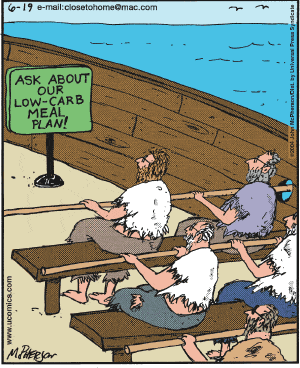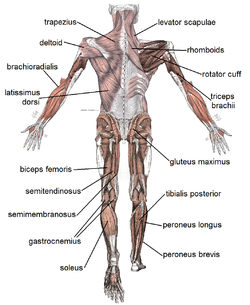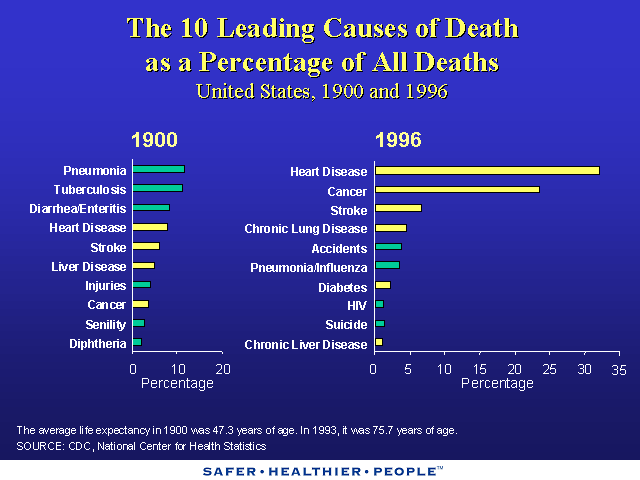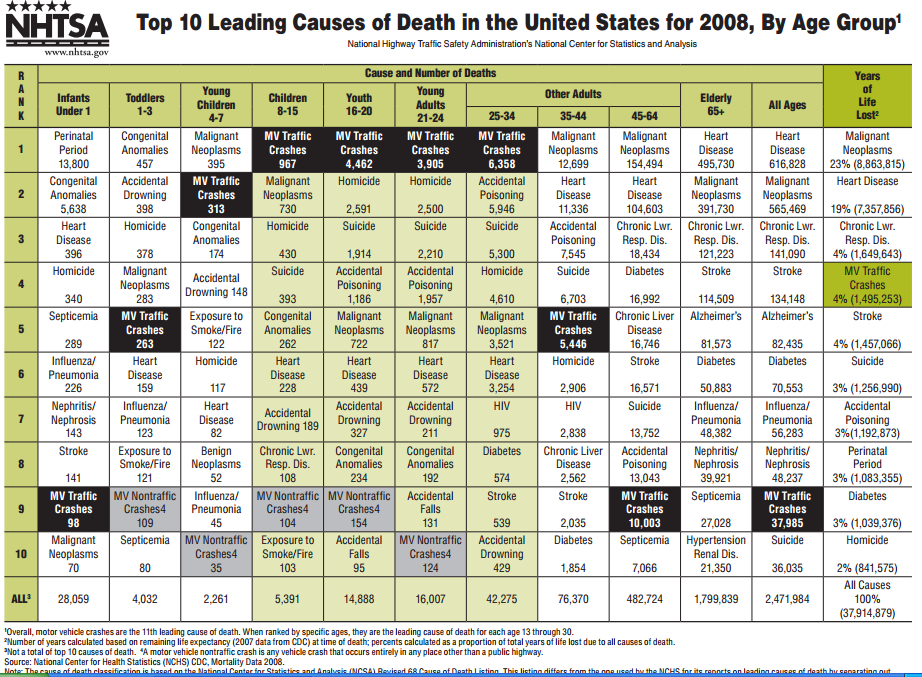Health Final Exam worksheet
Here is the material then answer the questions.
|
To understand the health status of a population, it is essential to monitor and evaluate the consequences of the determinants of health. The health status of the United States is a description of the health of the total population, using information representative of most people living in this country. For relatively small population groups, however, it may not be possible to draw accurate conclusions about their health using current data collection methods. The goal of eliminating health disparities will necessitate improved collection and use of standardized data to identify correctly disparities among select population groups. Health status can be measured by birth and death rates, life expectancy, quality of life, morbidity from specific diseases, risk factors, use of ambulatory care and inpatient care, accessibility of health personnel and facilities, financing of health care, health insurance coverage, and many other factors. The information used to report health status comes from a variety of sources, including birth and death records; hospital discharge data; and health information collected from health care records, personal interviews, physical examinations, and telephone surveys. These measures are monitored on an annual basis in the United States and are reported in a variety of publications, including Health, United States andHealthy People Reviews. |
|
The leading causes of death are used frequently to describe the health status of the Nation. Over the past 100 years, the Nation has seen a great deal of change in the leading causes of death. At the beginning of the 1900s, infectious diseases ran rampant in the United States and worldwide and topped the leading causes of death. A century later, with the control of many infectious agents and the increasing age of the population, chronic diseases top the list. A very different picture emerges when the leading causes of death are viewed for various population groups. (see figure 2). |
|
The leading causes of death in the United States generally result from a mix of behaviors; injury, violence, and other factors in the environment; and the unavailability or inaccessibility of quality health services. Understanding and monitoring behaviors, environmental factors, and community health systems may prove more useful to monitoring the Nation’s true health, and in driving health improvement activities, than the death rates that reflect the cumulative impact of these factors. This more complex approach has served as the basis for developing the Leading Health Indicators. |
| Figure 1 below shows the leading causes of death as a percentage of all deaths in the United States, 1900 and 1996.
|
| Figure 2 shows the leading causes of death by age group, United States, 2008
|
Macronutrients
All of the foods you eat are composed of three macronutrients: carbohydrates, protein and fat. Some foods are primarily carbohydrate (bread); others are mainly protein (turkey); and some are pure fat (olive oil). Other foods are combinations of two or all three. A slice of pizza is a perfect example. The crust and tomato sauce provide the carbohydrate, and the cheese provides protein and fat. In order to properly function, your body needs all three of these macronutrients in approximately the following ratio: 55 percent carbohydrate, 15 percent protein and no more than 30 percent total fat.
|
| How many calories do I need? The ideal situation to maintain a healthy body weight is to take in the amount of calories you need – no more, no less. As we all know, this is much easier said than done. To get a rough idea of how many calories you should be eating, look at the following USDA chart. Keep in mind, however, that this chart only offers three general caloric ranges, and your requirements may vary depending upon your age, sex, size and activity level. |
| General Daily Calorie Requirements | |
| 1600 calories | Number of calories needed for many sedentary women and older adults. |
| 2200 calories | Number of calories needed for most children, teenage girls, active women, and many sedentary men. Women who are pregnant and breastfeeding may need somewhat more. |
| 2800 calories |
Number of calories needed for teenage boys, many active men, and some very active women.
|
Nutrients:
A nutrient is a substance found in food that helps with body processes. The foods you eat give you energy. Energy is measured in calories. A calorie is a unit of energy produced by food and used by the body. Different nutrients provide different things your body needs.
Carbohydrates:
A nutrient that is the main source of energy for the body is a carbohydrate. Carbohydrates include sugars, starches, and fiber. There are two types of carbohydrates: simple and complex. Simple carbs enter the bloodstream fast and provide “quick energy”. They provide calories but provide little minerals and vitamins. Complex carbs are starches and fiber and include bread, pasta, potatoes, and beans. These foods provide long-lasting energy.
Fiber:
The part of grains and plant foods that cannot be digested is fiber. Fiber helps move food through the digestive system. Good sources of fiber include grains, breads, cereals, seeds, dried beans, fruits, and vegetables. There are two types of fiber: soluble and insoluble.
Proteins:
A nutrient that is needed for growth, to build, repair, and maintain body tissues, to regular body processes and to supply energy is a protein. Proteins form part of every cell in your body. They help your body maintain strength and resist infection. A diet that does not supply enough protein might stunt y your growth, affect the development of certain tissue, and affect mental health. There are two kinds of proteins: complete proteins and incomplete proteins.
Fats:
A nutrient that provides energy and helps the body store and use some vitamins is fat. The body needs fats to maintain body heat, maintain an energy reserve, and build brain cells and nerve tissues. You can break fats into 3 categories: saturated fats, unsaturated fats, and trans-fatty acids.
Vitamins:
A nutrient that helps the body use carbohydrates, proteins, and fats is a vitamin. Vitamins do not provide energy to the body directly, but they help free energy stored in carbs, proteins, and fats.
There are two different types of vitamins–fat-soluble vitamins and water-soluble vitamins.
Minerals:
A nutrient that regulates many chemical reactions int he body is a mineral. There are two types of minerals: marco minerals and trace minerals.
Water:
Water is a nutrient that is involved in all body processes. Water makes up part of the blood, helps with waste removal, regulates body temperature, and cushions the spinal cord and joints. Your body is more than 60% water. You can live without other nutrients for months, but you can survive without water only for about three days.
How To Read Nutrition Labels:
Visit this website to learn more about how to read nutrition labels to make sure you are getting all of your nutrients!
Eating Disorders
Being within a healthy weight range is important for wellness. People who are overweight have a greater chance of developing serious health problems such as high blood pressure, cardiovascular disease, and type 2 diabetes. Being significantly underweight is also unhealthy. These people may not have enough stored body fat which serves as a source of energy.
An eating disorder is an extreme eating behavior that can lead to serious illness or even death. Eating disorders can develop from a person being overly concerned with their weight and body image. There are several types of eating disorders. These include Anorexia Nervosa, Bulimia Nervosa, and Binge Eating.
Anorexia Nervosa is an eating disorder in which a person strongly fears gaining weight and starves him or herself. Eating very little prevents the body from getting enough nutrients. Bones may not develop properly, blood pressure may drop, and the heart may be damaged.
Bulimia Nervosa is an eating disorder in which a person repeatedly eats large amounts of food and then purges. Two ways to purge include throwing up and using laxatives. Bulimia not only keeps the body from getting its nutrients, but can also harm the colon, liver, heart, and kidneys. The lining of the stomach and esophagus can also be damaged from throwing up.
Binge eating is a disorder in which people eat too much food at one time then fast or diet to lose weight. Binge eaters do not purge. Health risks include weight gain, heart disease, diabetes, and some cancers.
Physical activity is any movement that makes your body use extra energy. Being physically fit is important for a lifetime of healthy living. It can help prevent many health problems and can also improve your overall mood and moral.
Elements of Exercise
- Endurance– the ability to perform difficult physical activity without getting overly tired.
- Muscle Endurance- the ability of a muscle to repeatedly use force over a period of time.
- Cardiovascular endurance- the measure of how well your heart and lungs work during moderate-to-rigorous physical activity or exercise.
- Strength– the ability of your muscles to use force.
- Flexibility– the ability to move joints fully and easily through a full range of motion.
- Body Composition– is the proportions of fat, bone muscle, and fluid that make up body weight.
Most physical activities and exercises can be classified as aerobic (rhythmic, moderate-to-rigorous activity that uses larges amounts of oxygen and works the heart and lungs) or anaerobic (intense physical activity that builds muscle but does not use large amounts of oxygen).

Regular physical activity throughout life is important for maintaining a healthy body, enhancing psychological well-being, and preventing premature death. In 1999, 65 percent of adolescents engaged in the recommended amount of physical activity. In 1997, only 15 percent of adults performed the recommended amount of physical activity, and 40 percent of adults engaged in no leisure-time physical activity.

|
Health Impact of Physical Activity Regular physical activity is associated with lower death rates for adults of any age, even when only moderate levels of physical activity are performed. Regular physical activity decreases the risk of death from heart disease, lowers the risk of developing diabetes, and is associated with a decreased risk of colon cancer. Regular physical activity helps prevent high blood pressure and helps reduce blood pressure in persons with elevated levels. |
| In addition, children and adolescents need weight-bearing exercise for normal skeletal development, and young adults need such exercise to achieve and maintain peak bone mass. Older adults can improve and maintain strength and agility with regular physical activity. This can reduce the risk of falling, helping older adults maintain an independent living status. Regular physical activity also increases the ability of people with certain chronic, disabling conditions to perform activities of daily living. |
Regular physical activity also:
|
* |
Increases muscle and bone strength. | |
|
* |
Increases lean muscle and helps decrease body fat. | |
|
* |
Aids in weight control and is a key part of any weight loss effort. | |
|
* |
Enhances psychological well-being and may even reduce the risk of developing depression. | |
|
* |
Appears to reduce symptoms of depression and anxiety and to improve mood |
Other Issues
The major barriers most people face when trying to increase physical activity are lack of time, lack of access to convenient facilities, and lack of safe environments in which to be active.
Populations With Low Rates of Physical Activity
1. Women generally are less active than men at all ages.
2. People with lower incomes and less education are typically not as physically active as those with higher incomes and education.
3. Blacks and Hispanics are generally less physically active than whites.
4. Adults in northeastern and southern States tend to be less active than adults in North-Central and Western States
5. People with disabilities are less physically active than people without disabilities.
6. By age 75, one in three men and one in two women engage in no regular physical activity.
We will soon be engaging in an activity to create our own fitness plan, so let’s go over some general safety concerns first. Here is a safety check list to keep in mind when beginning an exercise program.
|
Google Static and Dynamic Stretches to Learn More About Stretches

Now that we are aware of the pre-exercise safety issues, let’s go find out what workout plan will work for us. Remember, you want to exercise no less than 30 minutes 3 times per week, but research has found that exercising every day (moderately) for 20 minutes has even more positive effects.
Please go to Workouts For You and read the article about creating your own workout.
The
skeletal system is made up of bones and other tissue. There are 206 bones in the body. Joints, tendons, ligaments, and cartilage are also part of the skeletal system. Joints are places where two or more bones meet. Some joints allow bones to move, while others protect organs. Tendons are a type of tissue that connects muscles to bones and muscles to muscles. Ligaments are a type of connecting tissue that holds bones to other bones at the joint. Cartilage is strong but flexible tissue that cushions bones, allows joints to move easily, and supports soft tissues. The figure below shows the major bones in the skeletal system.

The muscular system includes tissues that move parts of the body and control the organs. There are more than 600 muscles in the human body. The muscular system provides the power and flexibility you need to move. There are three main types of muscles in the body; skeletal, smooth, and cardiac. Skeletal muscles are voluntary, which means you can control them. These muscles work in pairs to move bones. As one muscle contracts, the other muscle lengthens. The figure below shows the major skeletal muscles.

Heart and Blood Vessels
Vocabulary:
Circulatory System- the group of organs and tissues that act as transfer stations carrying needed materials to cells and removing their waste products
Arteries– blood vessels that carry blood vessels that carry blood away from the heart to other body parts<




